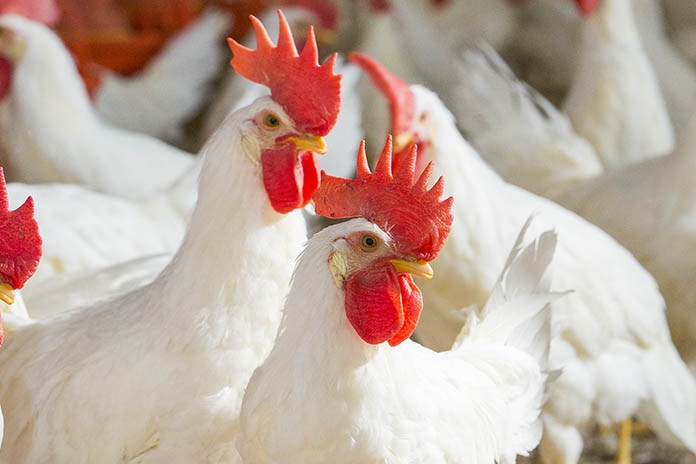
Black soldier fly (BSF) larvae are a promising alternative feed ingredient for monogastrics,includingpoultry.However,theimpactoffeedingBSFlarvaeinbroilerdietson the fatty acid profile of the breast chicken meat remains unknown.
This study aimed to investigate the impact of up to 20% BSF larvae dietary inclusion on the fatty acid profile of meat chicken breast meat when fed until 42 days of age.
A total of 400 male day-old Ross 308 birds were assigned to 10 birds/pen, five treatment groups with eight replicates per treatment. The five dietary treatments included increasing levels of BSF larvae as follows: the starter diets (fed from day 2-10) included 0, 2.5, 5, 7.5 and 10% BSF larvae, whereas, the grower (fed from day 11-21) and finisher diets (fed from day 22-42) included 0, 5, 10, 15 and 20% BSF larvae. All diets were isocaloric and met breeder’s nutrient recommendations. At 42 days of age, two birds per treatment group were euthanised, and their breast meat immediately removed, placed in a plastic bag and stored overnight at 4°C. On the following day, ~40g of meat was weighed and kept at -20 ℃ until lyophilisation and grinding. Thereafter the fatty acid profile of the 80 chicken breasts were analysed along with lyophilised BSF larvae using a fused carbon–silica column coated with cyanopropylphenyl (BPx70, 30mx 0.25 mm id and 0.25µm thickness, SGE Analytical Science, Ring Wood, Victoria, Australia, P/N 054622) and gas chromatography according to the method described by Clayton et al., 2012. A total of 48 fatty acids were identified in the breast meat samples, and data were analysed using IBM SPSS version 25 to conduct a curve estimation regression for linear, cubic, and quadratic responses. As a result, there was no significant difference among the groups in the total saturated (SFA) or total monounsaturated (MUFA) fatty acids, but individual linear increases (P<0.001) were observed for SFA such as lauric acid (C12:0) and myristic acid (C14:0), as well as a linear decrease (P<0.001) in stearic acid (C18:0) as the BSF larvae level increased in the diets. A significant negative correlation reflected a linear decrease of total polyunsaturated fatty acids (PUFA) in the breast meat with increasing levels of BSF. However, there were no significant changes in linoleic acid (C18:2, ω6), linolenic acid (C18:3, ω3), docosapentaenoic acid (C22:5, ω3) and docosahexaenoic acid (C22:6, ω3). There was a significant linear increase in eicosapentaenoic acid, EPA (C20:5, ω3), and mead acid (C20:3, ω9) as well as a linear decrease in adrenic acid (C22:4, ω6) with increasing inclusion of BSF.
The increase of EPA and mead acid in the chicken breast meat was almost 1 and 0.5-fold, respectively, when 20% of BSF larvae was included in the diets. In conclusion, by including up to 20% BSF larvae in the diet, the concentration of total PUFA in chicken breast was reduced. However, there were significant increases (1,0.5, and 22 fold respectively) in EPA (ω3), mead acid (ω9) and lauric acid, which are fatty acids with beneficial properties that may affect the status of chicken meat as a healthy food for humans.
From the Aust. Poult. Science Symp. 2020

















